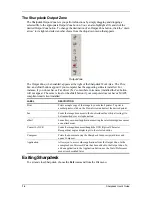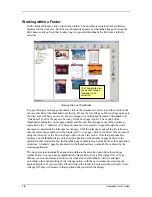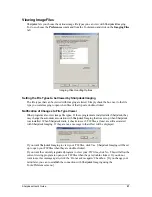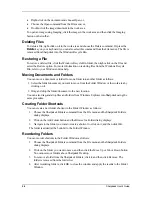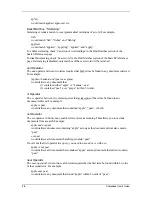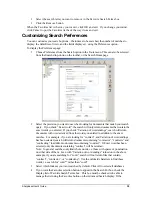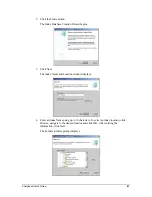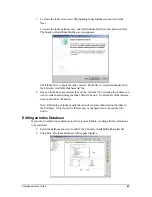
Setup Required
The Search capability is based on an index of all the words found in all of the files in the target
folders identified when the index is created. These indexes need to be created in advance of any
attempt to use the Search feature.
Creating an index can be a time-consuming process, at least the first time, based on the number of
files and whether they contain image types or not. Sharpdesk will attempt to gather words used in
image documents using its Convert by OCR capability. [The following image formats are
compatible with our OCR capability: *.bmp, *.dcx, *.gif, *.jpg, *.pcx, *.pdf, *.png, *.tif.] Any
words found by the OCR process are added to the index so you can find the image document that
contains them later. The OCR process is time-consuming in its own right, so allow plenty of time
when indexing image documents, or break the files you wish to index into smaller groups. You
can search through more than one index at the same time.
While the index is being created, it will be using your PC resources in the background. This will
slow it down if you are also trying to do other tasks on your PC. To avoid this, you can schedule
your index operations to run at a time when you are not normally using your PC. The indexes can
be created or updated while you sleep.
Once the original index is created, updating the index, either manually or on a timed schedule,
can be much quicker. Only those files changed or added to the folders covered by the index will
be accessed to update the index.
When Sharpdesk is first installed, a small index will be created using sample files provided with
Sharpdesk. Once you are familiar with the basic search process, you can create additional
indexes that match your own preferences. Creating new indexes is covered later in this Chapter.
Index Databases
All Index Databases are common to all users of the local PC. Regardless of the user’s authority
(i.e. whether the logged-in user belongs to Administrators, Power Users, Standard Users, or
Restricted Users Group, etc.), the user is capable of accessing any existing Index Databases as
well as creating one. The following table illustrates the details about what operation is permitted
by every user.
•
Create
– create new Index Databases
Any user can create new Index Databases.
•
Read
– read-only access to Index
Databases
Any user can search (and get correct
results) for all Index Databases created,
updated, or modified by any other user.
•
Update
– update (indexing) Index
Databases with new files being
indexed or new configurations
specified
Any user can perform indexing on any
Index Database(s) (individually or all at
once) regardless of who created, updated
or modified the Index Database previously.
•
Modify
– change configurations
(such as target folders, file extensions
etc.) of existing Index Databases.
Any user can change configurations of any
Index Database created, updated, or
modified previously by any user.
•
Delete
– delete existing Index
Databases
Any user can delete any Index Database
regardless of who created, updated, or
modified previously.
In summary, a set of Index Databases residing on the local PC is treated as shared, common
resources to all users of that PC regardless of user authorities.
Note:
I
mportant information regarding searching for documents
30
Sharpdesk User’s Guide

